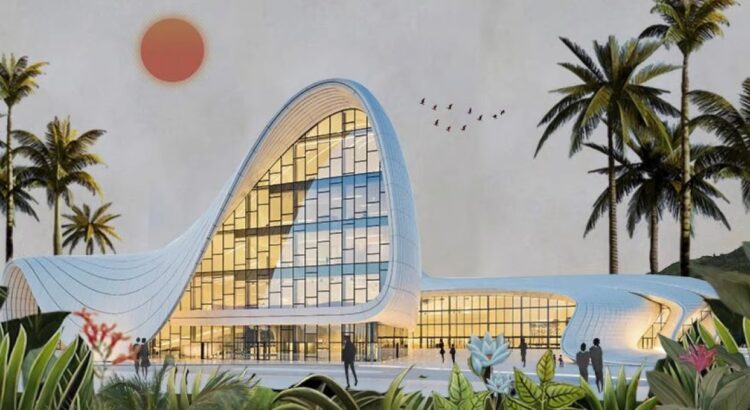Architecture stands at the intersection of art and science, a discipline that shapes the physical world in ways both functional and poetic. It is far more than the mere act of erecting buildings; it is the thoughtful design of spaces that serve human needs while inspiring a deeper connection to culture, environment, and history. From the soaring spires of Gothic cathedrals to the minimalist elegance of modernist homes, architecture is a testament to human ingenuity and creativity.
At its core, architecture embodies the synthesis of aesthetics, engineering, and social purpose. A well-designed building must not only captivate the eye but also accommodate the practical demands of its users. This delicate balance requires architects to navigate a myriad of factors, including structural integrity, environmental conditions, and cultural context. The mastery of these elements transforms architecture into a living art form that resonates across time.
Historically, architecture has reflected the values and aspirations of societies. Ancient civilizations, from the Egyptians to the Greeks and Romans, used monumental architecture to express power, spirituality, and civic pride. The pyramids, the Parthenon, and the Colosseum remain enduring symbols of their creators’ vision and technical prowess. Each structure tells a story, capturing a moment in history while influencing generations to come.
In the modern era, architecture continues to evolve, embracing new technologies and philosophies. The industrial revolution introduced materials such as steel and reinforced concrete, allowing architects to transcend traditional limits and create daring forms that defy gravity. Skyscrapers like New York’s Empire State Building and Chicago’s Willis Tower epitomize this new era of verticality and urban density, redefining city skylines worldwide.
Yet, architecture is not solely about grandiosity or novelty; it is deeply rooted in human experience. A building’s success often lies in its ability to foster a sense of place and belonging. Thoughtful design can enhance wellbeing by integrating natural light, ventilation, and harmonious proportions, contributing to both physical comfort and emotional serenity. Architects must therefore consider psychological as well as physical factors, crafting environments that nurture the human spirit.
Sustainability has emerged as a crucial imperative in contemporary architecture. As global awareness of climate change intensifies, architects are tasked with reducing the environmental impact of their creations. This responsibility has led to the rise of green architecture, which emphasizes energy efficiency, renewable materials, and designs that harmonize with natural ecosystems. Buildings like the Bosco Verticale in Milan, a vertical forest integrating lush vegetation into its facade, exemplify how architecture can embrace ecological stewardship while enhancing urban life.
Moreover, architecture is an ongoing dialogue between tradition and innovation. While technology enables unprecedented experimentation, many architects draw inspiration from vernacular forms and historical precedents, adapting timeless principles to modern needs. This fusion enriches architectural language, ensuring that new buildings are not mere objects but continuations of a living cultural narrative.
Urban design, a subset of architecture, expands the discipline’s reach by shaping entire communities and cities. It involves the planning of public spaces, streets, and infrastructure to create cohesive, vibrant environments. Successful urban design promotes accessibility, social interaction, and safety, enhancing the quality of life for residents. Iconic examples include the Parisian boulevards redesigned by Baron Haussmann and the thoughtfully planned neighborhoods of Barcelona’s Eixample district.
The role of the architect extends beyond design and technical expertise; it is also a profound act of stewardship. Architects mediate between clients, communities, engineers, and regulators, balancing competing interests and constraints. Their vision must be flexible enough to accommodate change yet steadfast in pursuing excellence. In this regard, architecture is as much a social practice as it is a creative endeavor.
In education, aspiring architects are encouraged to cultivate a broad perspective that encompasses history, philosophy, art, and science. This multidisciplinary foundation equips them to tackle complex challenges with innovation and sensitivity. The design process itself often involves iterative exploration—sketching, modeling, and testing ideas—to refine concepts that resonate both intellectually and emotionally.
Technology continues to transform architectural practice, with digital tools such as Building Information Modeling (BIM) and virtual reality enabling unprecedented precision and visualization. These advancements allow architects to simulate structural performance, environmental impacts, and user experience long before construction begins. As a result, architects can create more resilient, adaptable, and user-centered designs.
Ultimately, architecture is a mirror of humanity’s dreams, values, and challenges. It shapes the way we live, work, and interact, influencing culture and identity at every scale. While individual buildings may rise and fall, the legacy of architecture endures in the spaces that nurture our lives and inspire our imaginations. In every brick laid and every curve drawn, architecture reveals a timeless dialogue between form and function, past and future, nature and civilization.
In a world constantly in flux, architecture remains a steadfast force, crafting environments that not only shelter but also uplift. It calls upon architects to be visionary artists and pragmatic scientists, sensitive to the nuances of place and people. This delicate dance ensures that architecture continues to be a profound expression of human creativity—an enduring testament to our quest for beauty, meaning, and belonging.





